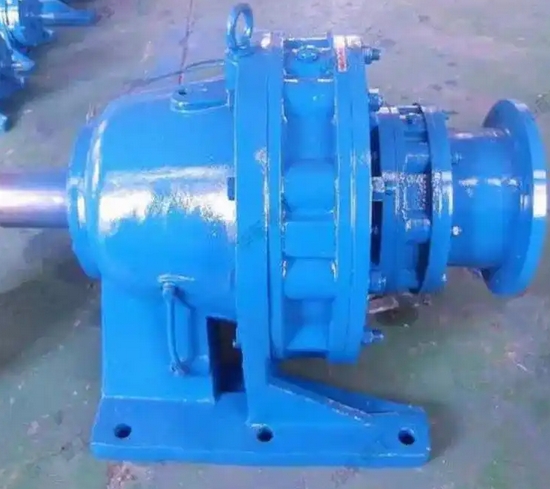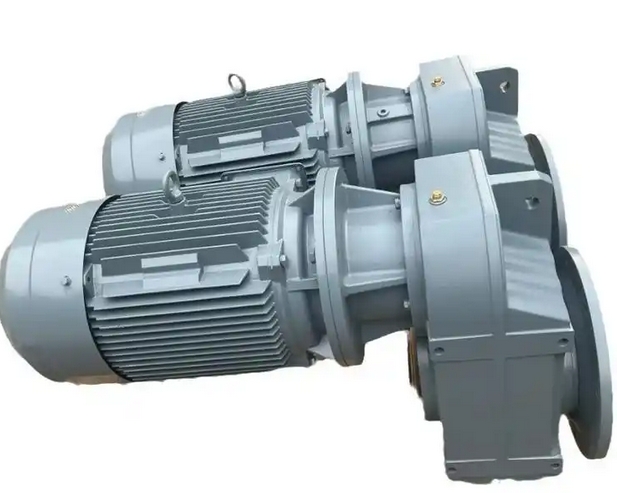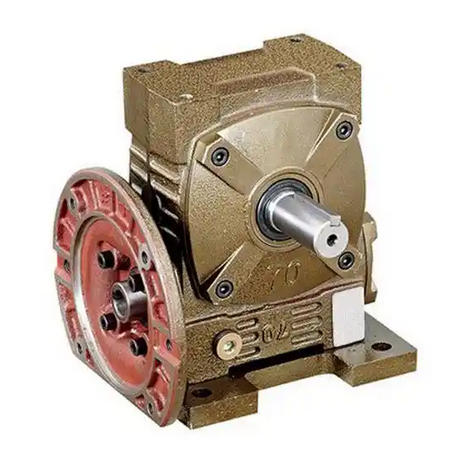How to diagnose faults in the XWE63-1849-1.5KW horizontal cycloidal pinwheel reducer
The method to determine the fault of XWE63-1849-1.5KW horizontal cycloidal pinwheel reducer is as follows:Abnormal vibration:
Phenomenon: The shell shakes significantly, accompanied by significant vibrations in the equipment.

Reason: It may be due to unstable installation foundation, such as soft foundation or uneven installation surface; Wear of eccentric sleeve bearings leads to unstable operation; The broken teeth of the cycloidal gear affect the transmission accuracy; The coupling misalignment exceeds the limit, causing deviation in power transmission.
Inspection method: Use a spirit level to check the installation base and see if its levelness error is within the range of ≤ 0.02mm; For bearings and cycloidal gears, wear and tooth breakage can be checked by disassembly; Use professional tools to check the alignment of the coupling.
Excessive temperature rise:
Phenomenon: During the operation of the gearbox, the oil temperature exceeds 85 ℃.
Reason: Incorrect selection of lubricating oil, unsuitable for the current working environment and load; The equipment operates under overload and remains in a high load state for a long time; Blockage of the cooling system, such as dust and other debris blocking the cooling channels, affects the cooling effect.
Inspection method: Check the model and usage of the lubricating oil to confirm whether it meets the requirements; Check the working load of the equipment and compare it with the rated load; Clean the heat dissipation channel and observe whether the heat dissipation effect improves.
Oil leakage:
Phenomenon: Oil leakage occurs on the sealing surface, bearing end cover, and other parts of the reducer.
Reason: Aging and damage of sealing components such as O-rings on the sealing surface; Loose bolts on the bearing end cover result in poor sealing; The ventilation hole is blocked, causing an increase in internal pressure and resulting in oil leakage.
Inspection method: Carefully inspect the sealing surface and the sealing components at the bearing end cover, and observe for signs of aging, deformation, or damage; Check the tightness of the bolts; Clean the ventilation holes to ensure they are unobstructed.
Abnormal noise:
Phenomenon: The gearbox produces abnormal sounds during operation, such as clicking, metal friction, periodic muffled sounds, etc.
Reason: The clicking sound may be due to worn pin teeth; The metal friction sound may be due to abnormal meshing of the cycloidal gear; Periodic muffled noise may be due to bearing damage.
Inspection method: Use a stethoscope or other tools to locate the sound source and determine the specific sound producing component; Check the wear of the pin teeth, cycloidal gear, and bearings, and measure whether the meshing clearance is within a reasonable range of 0.15-0.25mm.
Output shaft fracture:
Phenomenon: Cracks or complete fractures appear on the output shaft, resulting in abnormal power output.
Reason: The axial impact load exceeds the limit and exceeds the bearing capacity of the output shaft; The clearance between the key slots is too large, causing uneven force on the output shaft during transmission; Improper heat treatment of the material resulted in insufficient strength of the output shaft.
Inspection method: Check the working records of the equipment to confirm whether there is excessive impact load; Check the fit of the keyway; Perform magnetic particle inspection and other tests on the output shaft to check for internal defects.



